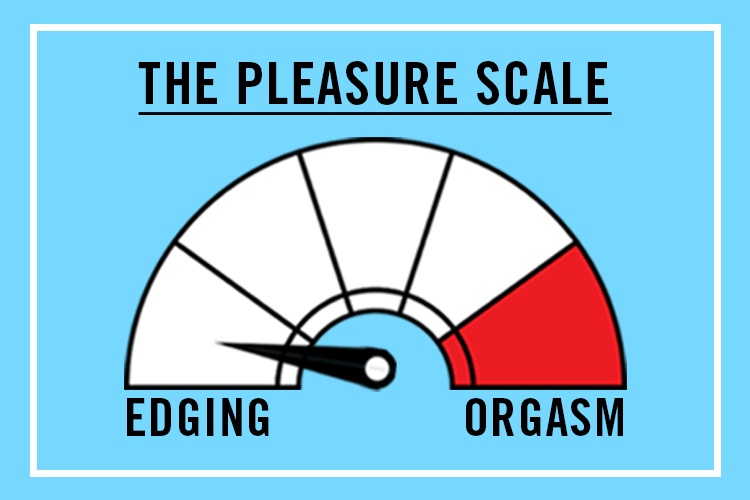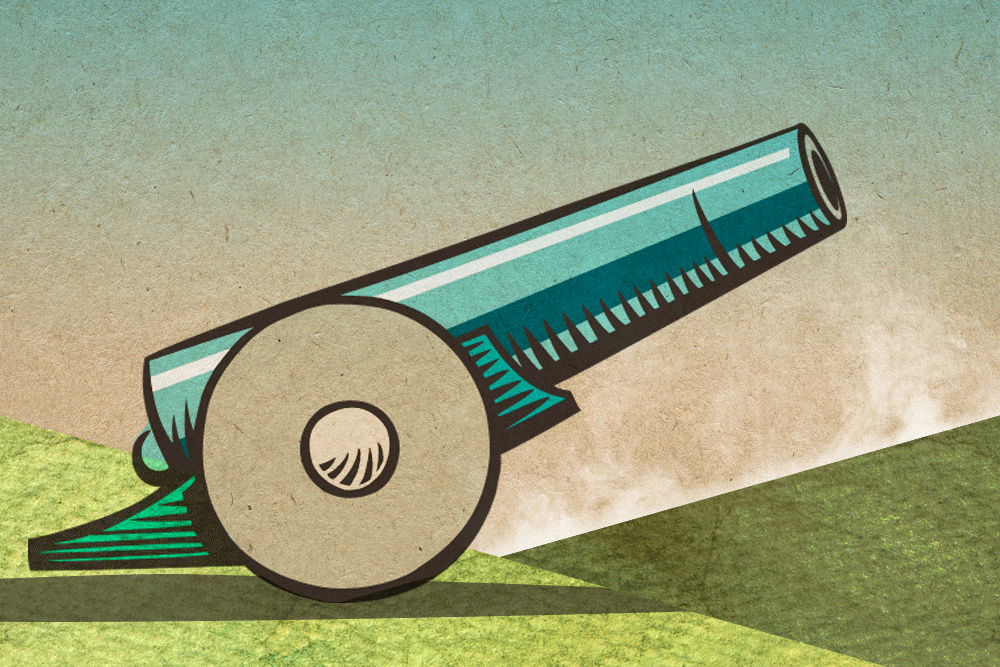The male orgasm is, to use the most clichéd metaphor in the book, a rollercoaster ride. Not because it involves a thrilling series of ups and downs, but because once it’s done, you can’t just stay in your seat for another go — you have to head to the back of the line and wait your turn all over again.
But why? What is so impossible about the male body that it can’t experience multiple orgasms the way some women can?
“It all has to do with the refractory period,” says sexologist Michelle Hope. There are three stages to a male orgasm, she explains: “Phase one is the excitement phase — the part where your nipples will get hard, things like that.” This, she says, is followed by the “plateau phase,” where there’s a sustained level of arousal that ends in ejaculation. Finally, there’s the third stage, the refractory period, which is when men generally become flaccid — and stay flaccid, despite their most frantic efforts to the contrary.
Women, she says, don’t necessarily follow this path, and are able to repeat the second phase again and again in what we generally think of as multiple orgasms. While some younger guys might claim to be able to do the same, Hope says this isn’t the case: “In reality, their refractory period is just shorter.”
So what exactly is your body doing while you’re trying to get hard again? Physically speaking, there are really only two organs holding you up — your penis and your brain.
How to Cum Twice: Your Penis
Despite having seemingly just dispensed their load, your testicles don’t actually need any recovery time to go again: They produce about 1,500 sperm per second, so when it comes to your ejaculate, there’s always more where that came from. Your penis, on the other hand, suffers from a pretty dramatic change during the refractory period.
“Once the ejaculate leaves the body, the penis is telling the brain that it no longer needs that blood supply,” explains Muhammad Mirza, a specialist in male reproductive health. Since the neurotransmitters in your brain don’t register that you’d actually like to keep going, it redistributes the blood that was previously keeping you hard. In order to regenerate, the arousal process needs to start all over again. In younger men, this may be a matter of mere minutes, while further into adulthood, the average is more like 30 minutes. In older people, it can take up to 24 hours, according to Hope.
How to Cum Twice: Your Brain
During arousal, your brain releases dopamine, the hormone responsible for that first big wave of pleasure. Once you’ve ejaculated, though, Hope explains that your desire rapidly dissipates because the brain starts releasing other chemicals that have different effects. First comes serotonin, which is responsible for the lazy-feeling high you experience after sex, followed quickly by oxytocin, the bonding chemical that puts you more in the mood to lie strewn across the bed, still entangled with your panting partner, than to try for a second screw. Combined, the most likely feeling you’ll have is not one of horniness but of wanting to sleep.
So Is There a Way to Cum Multiple Times?
“I can tell you for sure that a man can orgasm more than once,” says Rachel Abrams, author of The Multi-Orgasmic Woman and The Multi-Orgasmic Couple, as well as the contributor of one chapter to, you guessed it, The Multi-Orgasmic Man. “Most men have what we call a ‘terminal orgasm,’ where you’ve just blown your load and it’s done, but it doesn’t have to be that way.” In time and with practice, Abrams explains, men can extend that pleasure and learn to orgasm more than once.

The key, she says, is to be able to separate the orgasm from the ejaculation, which as we all know is no small feat. Abrams recommends practicing solo first, to learn your body’s “pleasure scale.” “The trick is to bring yourself very, very close to orgasm, but then back down, then get close again, then back down and keep repeating that,” she explains. “That way, you’ll understand the subtleties of where that high arousal lies.”
Once you learn your pleasure scale more closely, Abrams says, “It’s actually possible for men to orgasm without ejaculating, yet still experience those same waves of pleasure.” It’s a trick we’ve discussed previously, and one that all comes down to pelvic floor control — the ability to hold off from actually ejaculating by tensing the muscles of, essentially, your taint. By combining this with Abrams’ advice, it’s possible — faintly, minutely, you’ll-probably-never-experience-this possible — that you’ll be follow an orgasmic pattern more similar to a woman’s, able to keep repeating the second stage without slipping into the third.
Wait, did we mention that this isn’t very likely yet? Even Abrams cautions that you shouldn’t get your hopes up, since this ability is very rare in men. “This used to be a secret practice in Daoist philosophy, because you’re supposed to be an aficionado at using your energy,” she says. So unless you’re really in command of your chi, you’re just going to have to accept being a one-shot wonder.
Your Most Loaded Questions About Cum, Answered
- First of all, is it spelled “come” or “cum”?
- And while we’re at it, here’s what’s in your ejaculate — and what cum tastes like.
- What is CEI, and why do straight guys love eating their own cum?
- How does stress hurt my sperm?
- Wait, there are carcinogens in sperm??
- What are cum shoes, exactly???
- Do you want to learn more about precum? Of course you do!
- In case you were wondering (you were), here’s how women want you to cum.
- Also, how much cum do you throw away in a lifetime?
- And why is it that some men can’t cum at all?
- Should you freeze your sperm if you want to have kids later?

